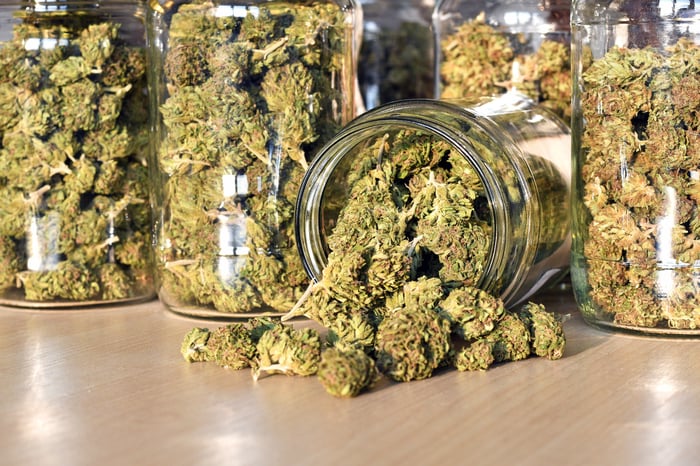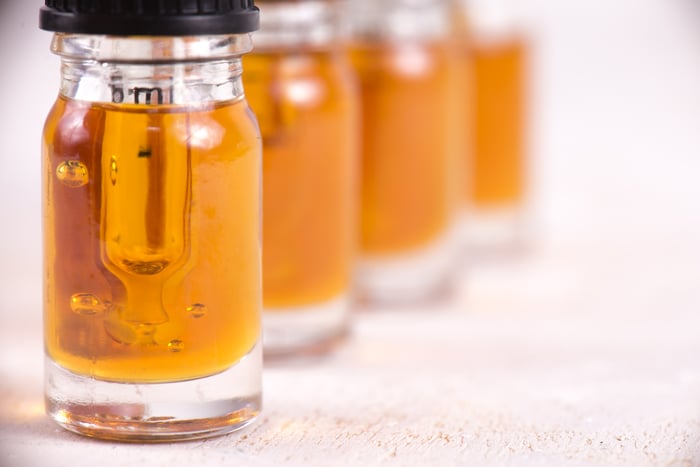When the year finally comes to a close in less than six weeks, investors are liable to look back and declare this the most game-changing year for the marijuana industry. At seemingly every turn, history has been made.
Last month, Canada became the first industrialized country in the world to legalize recreational cannabis, which should pave the way for billions of dollars in added annual sales once the industry is fully up to speed. We also witnessed as Canadian-based Tilray chose to IPO its stock on a reputable U.S. exchange in July.
Within the U.S., residents in two new states approved medical marijuana initiatives, bringing the number of states to have legalized pot in some capacity to 32. Residents in Michigan also voted in favor of a recreational weed proposal, making it the 10th state where adult-use cannabis is legalized. And, as icing on the cake, we also saw Vermont OK recreational weed use entirely through the legislative process in January. It's simply been a historic year all the way around.

Image source: Getty Images.
There's more to investing in pot stocks than just production
However, it's also been a transformative year, at least in the way investors should be looking at investing in marijuana stocks. With adult-use marijuana now legal in Canada, we've moved beyond the time for promises and into a period where results actually matter. But what many folks may fail to realize is that these tangible results include much more than just peak production estimates.
The first half of 2018 pretty much entailed marijuana stocks announcing one capacity expansion project, partnership, or acquisition after another. It was seemingly a race to see which company could eventually produce the most cannabis on an annual basis. Although the landscape remains fluid, it looks as if Aurora Cannabis (ACB -0.69%) will lead the industry, with perhaps 700,000 kilograms of peak annual output, inclusive of its ICC Labs acquisition. Aurora Cannabis is followed by Canopy Growth Corp. (CGC 2.75%), Aphria (APHA), and Tilray which, in my best estimate (and via company estimates, where applicable) will produce around 500,000 kilograms, 255,000 kilograms, and between 200,000 kilograms and 225,000 kilograms, at their respective peaks.
Don't get me wrong, production is meaningful. Demand should be strong domestically, and there's a boatload of opportunity in foreign markets where medical pot is legal. Presumably, top-tier growers will have little trouble landing long-term supply deals, which means less work that needs to be done to find a buyer for their product.
But there's a lot more that matters than just aggregate production, which is a big reason why companies like Aurora Cannabis aren't an automatic buy in my book.

Image source: Getty Images.
Here's what you should be paying attention to
To begin with, product diversification is extremely important. Even with instances of recreational legalization being rare, we've witnessed dried cannabis become commoditized in Colorado, Washington, and Oregon in recent years. This suggests that if growers fail to diversify their product lines, they'll run the risk of seeing their operating margins shrink, no matter how much cannabis they produce.
In particular, it's important for marijuana companies to develop high-margin alternative products that speak to medical patients and the recreational market. For instance, Aphria is constructing an extraction center that'll be capable of 25,000 kilogram-equivalents of concentrates, when fully operational. Concentrates typically have a higher price and better margins than dried cannabis flower. Plus, there's a considerably smaller chance of commoditization with most alternative cannabis products. It is worth noting that, with the exception of oils, most alternatives have yet to be approved by Canada's parliament. However, that's expected to change in 2019.
Secondly, partnerships are important. Now, this isn't to say that marijuana stocks necessarily need a partner to thrive. But deep-pocketed, brand-name partners bring benefits to the table that are invaluable. Take Corona and Modelo beer maker Constellation Brands' (STZ 1.47%) $4 billion equity investment in Canopy Growth as a perfect example. Though technically more than just a partnership given Constellation's 37% stake in Canopy, the duo will look to develop new products, as well as push Canopy's products into new markets. Constellation has deep pockets and unique marketing expertise with vice products, while Canopy has leading brands within the marijuana industry. It's a symbiotic partnership that makes Canopy a potentially intriguing investment.

Image source: Getty Images.
Third, the ability of marijuana stocks to push into new markets and land supply deals is important. Now, this is an area where a company like Aurora Cannabis has excelled. Aurora has a presence in 18 countries spanning five continents, which is fantastic considering that the industry is still getting its feet wet, so to speak. Canopy Growth is another standout, with 70,000 kilograms of annual supply deals among Canada's provinces and territories. Aphria also has access to around a dozen markets.
Lastly, profits matter -- and this is an area where a company like Aurora Cannabis disappoints. Aurora's acquisition spree may balloon its outstanding share count from 16.2 million to around 1 billion in a span of five years. This makes it incredibly difficult for the company to generate a meaningful profit, at least on an operating basis. You'll want to pay close attention to how pot stocks look to mitigate expenses while pushing for operating profits in the quarters that lie ahead.
Long story short: There's more to investing in pot stocks than just peak production estimates.





